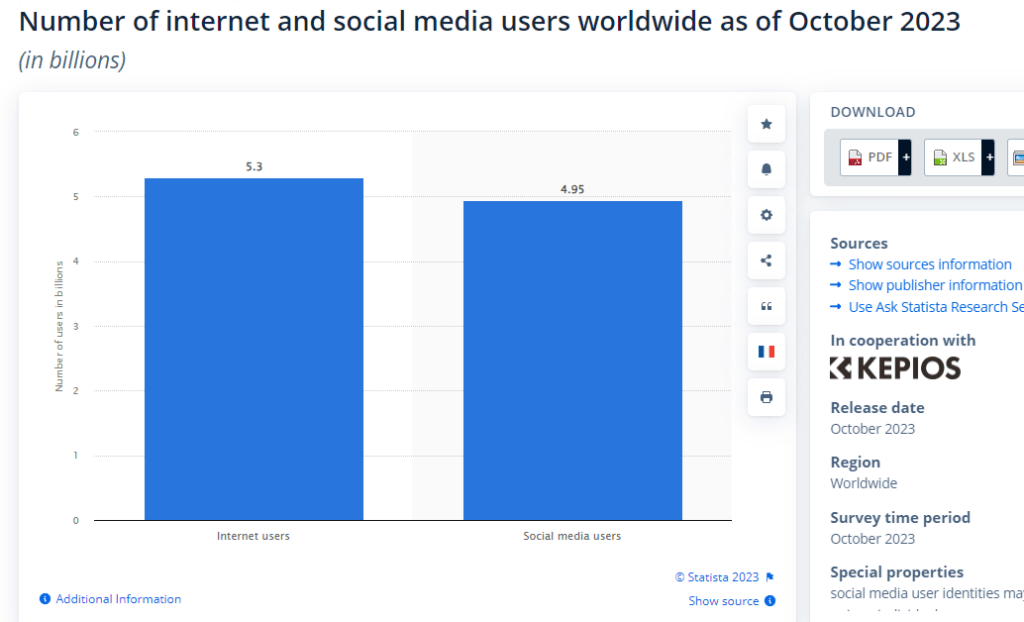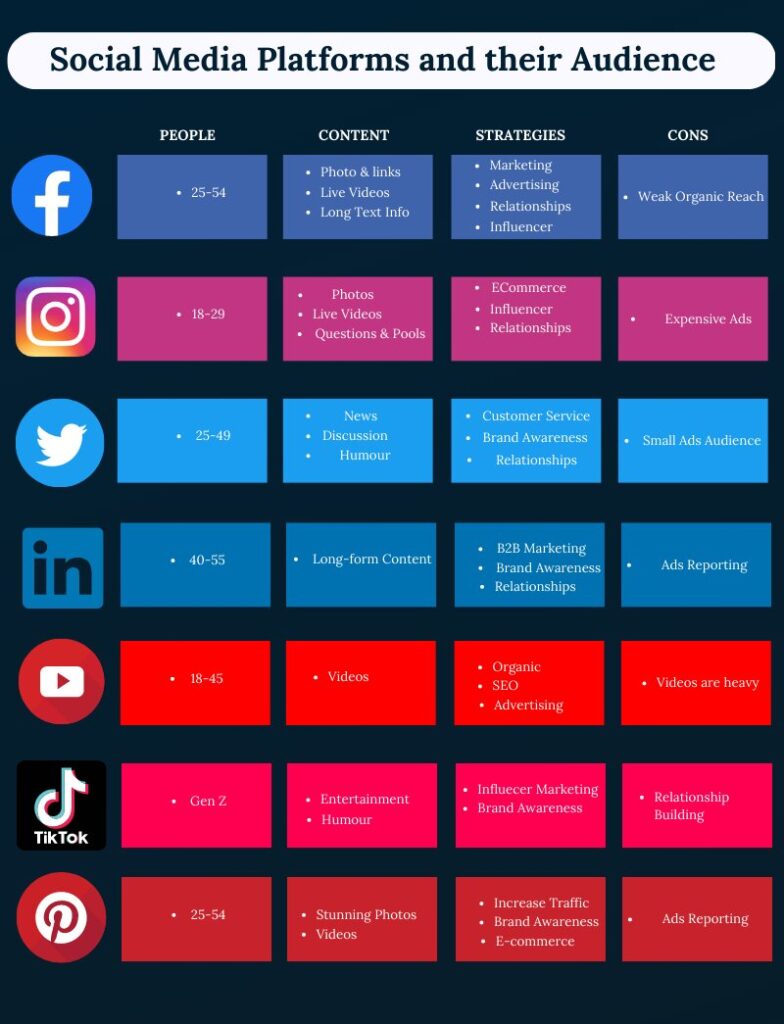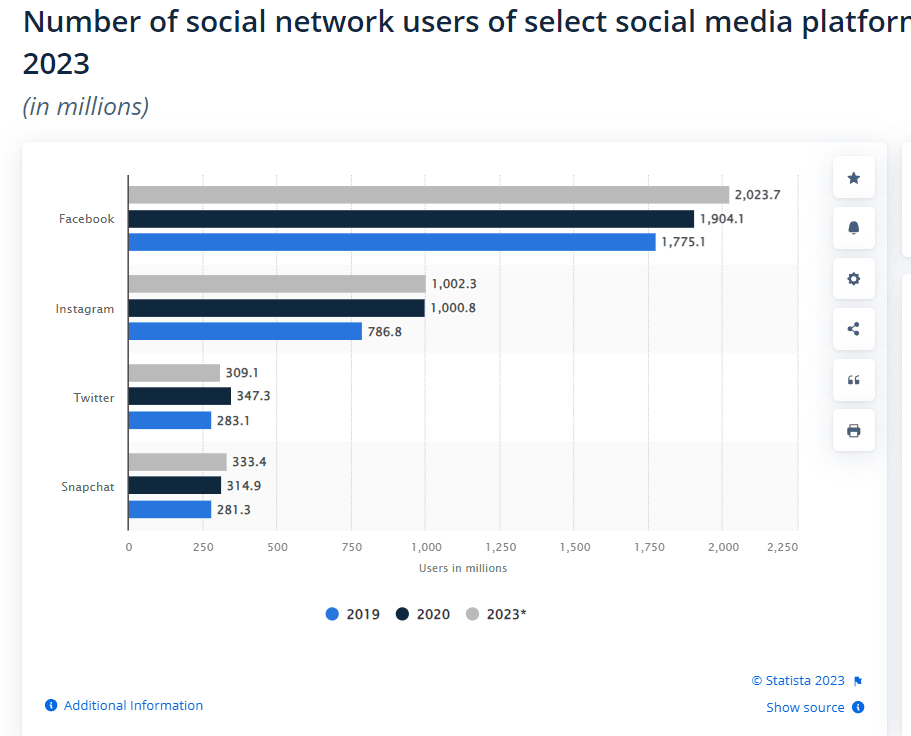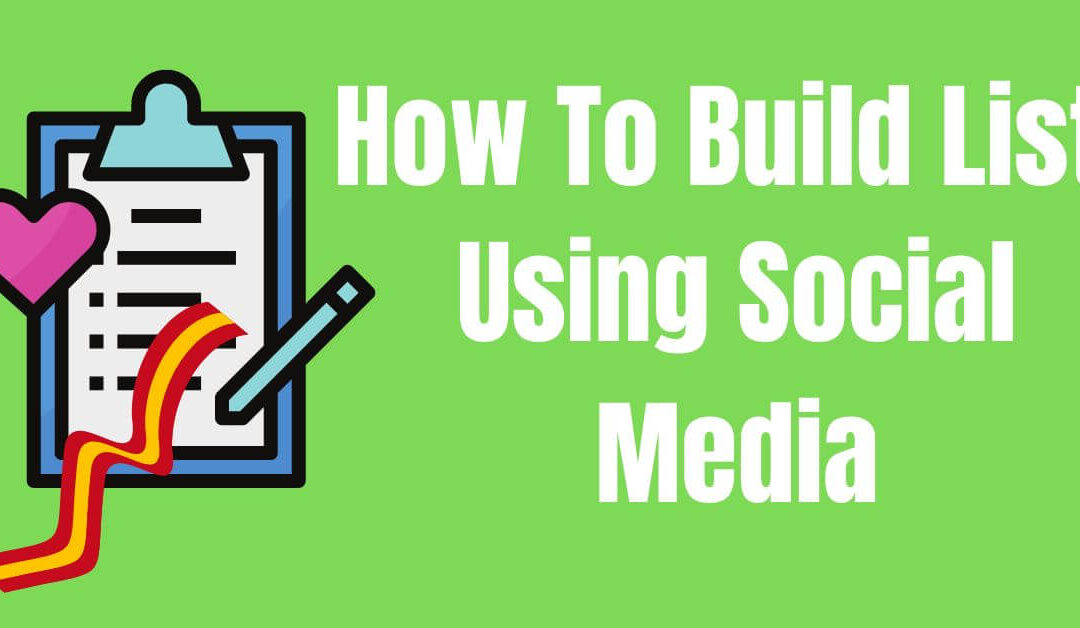Social media is a powerful tool businesses can use to reach and connect with their target audience. With over 4 billion active users worldwide, social media platforms offer businesses a vast and diverse audience to engage for better business growth. However, to have an effective social media marketing, businesses must have a comprehensive social media strategy in place. This strategy includes setting goals and measuring success, creating content, building an engaging community, and advertising on social media. But it’s also important for businesses to understand that social media is a constantly evolving landscape.

Businesses need to be proactive in monitoring and adjusting their strategy and staying up to date on trends and best practices. This article will delve into the importance of social media for businesses and the key steps to creating a successful social media strategy, including tips on continually monitoring and adjusting efforts to stay relevant and reach the target audience effectively.
Table of Contents
What is social media marketing
Social media marketing refers to promoting a product, service, or brand using social media platforms like Facebook, Instagram, Twitter, TikTok and LinkedIn. This strategy typically includes creating and sharing content, building relationships with followers, running ads and campaigns, and analyzing data to measure the success of the marketing efforts. The goal of social media marketing is typical to increase brand awareness, drive website traffic, generate leads, or boost sales. It is a cost-effective way of reaching a large audience, making it an important aspect of digital marketing strategies for businesses of all sizes.
Importance of Social Media Marketing in Business
Social media has become an essential component of modern business strategy. Here are a few key ways that social media can benefit businesses:
Increased Brand Awareness: Social media platforms allow businesses to reach a large audience efficiently and quickly, increasing their brand visibility and awareness. Platforms like Facebook, Instagram, and Twitter allow businesses to connect with potential customers and grow their brands.
Enhanced Customer Engagement: Social media platforms allow businesses to interact directly with their customers, providing valuable insights and feedback that companies can use to improve products, services, and overall customer experience. Platforms like Instagram, Twitter, and LinkedIn enable businesses to build relationships with followers and provide them with valuable content.
Cost-Effective Marketing: Compared to traditional forms of advertising such as TV, print, and radio, social media advertising can be relatively inexpensive and highly targeted. Platforms like Facebook and Instagram offer businesses a range of advertising options, from boosting posts to running targeted campaigns to reach a specific audience.
Increased Website Traffic: Social media platforms can drive significant traffic to a business’s website. Platforms like Facebook and Instagram offer features such as links and calls-to-action buttons that allow users to visit the business website directly.
Improved Search Engine Optimization: Social media platforms also play a critical role in optimization (SEO). Businesses with active social media profiles rank higher in search engine results, increasing website visibility and traffic.
Access to Real-time Analytics: Social media platforms provide businesses with valuable data and analytics that companies can use to track their performance, measure the impact of their campaigns, and make data-driven decisions.
Increased Sales and Conversions: Platforms like Facebook page, Instagram, and Twitter allow businesses to promote their products or services and drive conversions. By creating engaging and high-quality content, companies can encourage followers to make a purchase or take other desired actions.
Enhanced Customer Service: Social media platforms also serve as virtual customer service channels. Platforms like Twitter and Facebook allow businesses to respond quickly to customer inquiries and complaints, improving overall customer satisfaction and loyalty.
Amplifying the influence through Influencer Marketing: Businesses can collaborate with social media influencers with a strong following and high engagement rate to reach new audiences and increase brand awareness.
When it comes to social media, there are a variety of platforms available, each with its unique audience and features. Understanding the different platforms and their audiences is essential to creating a successful social media marketing strategy.
The importance of social media for businesses cannot be overstated. From increasing brand awareness and driving website traffic to generate leads and boosting sales, social media marketing has the potential to provide measurable results and a strong return on investment. However, for a social media strategy to be effective, it is important for businesses to continually monitor and adjust their approach based on trends and new technology in town. This includes tracking metrics, identifying areas for improvement, and making adjustments as needed to optimize performance.
An Overview of Different Social Media Platform and their Audience

Facebook: With over 2.8 billion monthly active users, Facebook is the largest social media platform. The platform is popular with people of all ages but particularly among adults aged 25-54. Facebook is great for businesses looking to increase brand awareness and drive website traffic, as it allows businesses to create a page and promote their products or services. The platform also offers a wide range of advertising options, making it an excellent choice for companies looking to run targeted campaigns.
Instagram: With over 1.2 billion monthly active users, Instagram is a visual-focused platform popular among younger users. It is trendy among users aged 18-29, making it an excellent choice for businesses targeting a younger audience. Instagram is great for companies looking to increase brand awareness, showcase their products or services, and build customer relationships. The platform also offers a range of advertising options and features, such as Instagram stories and IGTV, which businesses and individuals can use to create engaging, visually appealing content.
Twitter: With over 330 million monthly active users, Twitter is a micro-blogging platform popular among younger users and professionals. Twitter is great for businesses looking to build customer relationships, increase brand awareness, and stay on top of industry trends. The platform’s real-time nature makes it an ideal choice for businesses looking to engage in timely conversations with customers and influencers.
LinkedIn: With over 700 million monthly active users, LinkedIn is a professional networking platform popular among professionals and business owners. The platform is excellent for businesses looking to connect with other professionals, increase brand awareness, and build relationships with potential customers and employees. It is also popular among B2B businesses and is an ideal B2B marketing strategy platform.

YouTube: With over 2 billion monthly active users, YouTube is the world’s second-largest search engine. The platform is popular among all age groups, particularly among users aged 18-49. YouTube is great for businesses looking to increase brand awareness, drive website traffic, and showcase their products or services through video content.
TikTok: With over 1 billion active users worldwide, TikTok is a social video platform where users can create and share short videos with music and special effects. It is trendy among Gen Z. TikTok is excellent for businesses looking to reach younger audiences, increase brand awareness and showcase their products or services using short videos.
Pinterest: With over 250 million monthly active users, Pinterest is a visual discovery platform popular among women aged 25-54. Pinterest is great for women-focused businesses looking to increase brand awareness, drive website traffic, and showcase their products or services through visual content.
Setting Goals and Measuring Success
Setting goals and measuring success are critical components of a successful social media marketing strategy. By setting specific, measurable, achievable, relevant, and time-bound (SMART) goals, businesses can ensure that their efforts are aligned with their overall objectives and that they can track and measure progress over time.
Identifying your target audience and goals: The first step in setting goals for your social media marketing efforts is to identify your target audience and the specific goals that you hope to achieve. Some common business goals include increasing brand awareness, driving website traffic, generating leads, or boosting sales. It’s essential to clearly understand your target audience and their needs so your goals and objectives are tailored to them.
Measuring success through Analytics and Metrics: Once you’ve established your goals, it’s crucial to set up tracking and measurement systems to monitor your progress and make adjustments as needed. This includes identifying key metrics that will be used to measure success and selecting the right analytics tools to track these metrics. Standard metrics include website traffic, engagement rates, and conversion rates.
Setting up tracking and measurement systems: In tracking and measuring the performance of social media campaigns, businesses can use built-in analytics and tracking tools that come with the platform, such as Facebook Insights or Twitter Analytics. Additionally, third-party analytics tools such as Google Analytics, Hootsuite, and Sprout Social can provide businesses with more in-depth insights into their social media performance. Setting up these systems early on is vital so you can start collecting data as soon as possible.
Continuous monitoring and optimization: Measuring success is a constant process, and businesses should continuously monitor the performance of their social media campaigns and make adjustments as needed. This includes tracking metrics such as website traffic, engagement, conversion, and ROI. Based on these metrics, businesses can optimize their campaigns to improve performance and achieve their goals.
ROI measurement: One of the critical aspects of measuring success in social media is measuring the efforts’ Return on Investment (ROI). By measuring the ROI, businesses can understand how much revenue their social media campaigns generate compared to the cost used in running campaigns and ads. This ROI measurement will help in budgeting and decision-making of scaling or cutting down the efforts.
Creating a Content Strategy
Creating a content strategy is vital to any social media marketing campaign. A well-crafted content strategy provides a roadmap for creating and sharing content that aligns with your goals and resonates with your target audience. Here are the critical steps in creating a content strategy for social media:
Identify your brand voice and message: The first step in creating a content strategy is to identify your brand voice and message. This includes determining the tone and style used in your social media content and identifying the key messages you want to convey to your target audience. Your brand voice should be consistent across all platforms and reflect your brand’s personality and values.
Plan and create content: Once you have established your brand voice and message, it’s essential to plan and create content that aligns with your goals and resonates with your target audience. This includes determining the types of content that you need to create, such as blog posts, images, videos, infographics, and more. It also includes identifying the key topics that will be covered and creating a content calendar to plan and schedule your content.
Determine the right mix of text, images, and video for different platforms: Different social media platforms have different content preferences. For example, while Instagram is more visual-based, Twitter is more text-based. Therefore, it’s crucial to determine the right mix of text, images, and video for different platforms to ensure your content is optimized for each platform and resonates with the audience.
Utilize Influencer marketing: Influencer marketing is a great way to amplify your content reach and connect with the target audience. Identifying the right influencers with a large following and high engagement rate in your industry can benefit your content strategy. Collaborating with them to create sponsored posts, product reviews, and more can increase engagement and help your brand reach a larger audience.
Schedule and Automation tools: Creating and sharing content constantly can be time-consuming and require much effort. Scheduling and Automation tools such as Hootsuite, Buffer, Later, etc., can automate the scheduling and publishing process so that you can focus on creating high-quality content.
Monitor and evaluate performance: Finally, it’s essential to monitor and evaluate the performance of your content to see what’s working and isn’t. This includes tracking metrics such as engagement, click-through, and conversion rates and making adjustments as needed to optimize your content strategy.
Building an Engaged Community
Building an engaged community is essential to a successful social media marketing strategy. By fostering a sense of belonging among your followers, you can create a loyal fan base that will promote your brand and drive growth for your business. Here are the critical steps in building an engaged community on social media:
Interact with and respond to followers: One of the key ways to build an engaged community is to interact with and respond to your followers. This includes responding to comments, messages, and direct messages promptly and professionally. This step helps to build trust and credibility with your followers and shows them that you value their input.
Run promotions and contests: Another way to build an engaged community is to run promotions and contests on your social media platforms. This strategy can include giveaways, sweepstakes, and other contests that encourage engagement and help build excitement around your brand.
Build relationships with other businesses and influencers: Building relationships with other businesses and influencers in your industry can also help to build an engaged community. This step can include collaborations, partnerships, and guest blogging opportunities, which can help to expand your reach and increase brand awareness.
Use community management techniques: Community management techniques such as segmenting your audience, identifying leaders in your community, and creating a sense of belonging can also help to build an engaged community. Segmenting your audience allows you to target specific groups of people with tailored content while identifying leaders in your community allows you to build relationships with the most engaged and influential audience members. Creating a sense of belonging by encouraging interaction, sharing personal stories, and creating a sense of purpose within the community can also help build an engaged community.
Advertising on Social Media
Advertising on social media is a powerful way for businesses to reach a targeted audience and achieve their marketing goals. Social media platforms offer a wide range of advertising options that allow businesses to create and run targeted campaigns to reach specific audiences. Here are the key steps in advertising on social media:
Identify your target audience: The first step in advertising on social media is to identify your target audience. This step includes identifying your target audience demographics such as age, gender, location, interests, and behaviour. You can use this information to create a target audience for your ads and ensure that the right people see them.
Pick the right platform: Each social media platform has its unique audience and advertising options. For example, Facebook and Instagram offer a wide range of targeting options and are great for businesses looking to increase brand awareness. At the same time, LinkedIn is more geared towards B2B companies and recruiting. Twitter is great for real-time engagement, and TikTok is popular among Gen-Z. Selecting the right platform that aligns with your business goals and target audience is crucial.
Create high-quality ads: To get the best out of social media campaigns, social media ads must be visually appealing and engaging. This includes using high-resolution images or videos and including a clear call-to-action. You should optimize the creative for the specific social media platform where the ad will run.
Set up a budget and bid for ad placements: Once you’ve created your ads, you’ll need to set a budget for your campaign and bid for ad placements. Social media platforms use an auction-based system for ad placement, where businesses bid for their ads. By setting a budget and bidding strategically, businesses can ensure that their ads reach the right audience at the right price.
Use Ad targeting options: Social media platforms offer a wide range of targeting options that allow businesses to reach specific audiences. This includes demographic targeting, interest targeting, and behavioral targeting. It’s important to use these options to ensure that your ads reach the right people.
Monitor and adjust your campaign: Once your ads are live, it’s important to monitor their performance and make adjustments as needed. This includes tracking click-through rates, conversion rates, and return on investment (ROI) to see which ads are performing well and which are not. Based on this information, businesses can adjust their targeting, creativity, and budget to optimize the performance of their campaigns.
Advertising on social media is a powerful way for businesses to reach a targeted audience and achieve their marketing goals. Identifying the target audience, selecting the right platform, creating high-quality ads, setting a budget, using ad targeting options, and monitoring and adjusting strategy are important for businesses to stay up-to-date on social media trends and best practices. This includes staying informed of new features and updates on social media platforms and understanding which platforms align with business objectives and target audiences—keeping up with algorithm changes and learning new ways to optimize content and advertising to reach the audience. Continuously educating oneself on the best practices and strategies can make social media efforts more effective.
Final Thoughts on Social Media Marketing
Social media is essential for businesses looking to grow and connect with their target audience. However, it is important to have a well-thought-out strategy, monitor and adjust efforts based on performance, and stay current with the trends and best practices. By following these steps, businesses can create a comprehensive social media strategy to drive growth and deliver a strong return on investment. As a business owner, you must understand that social media is an ever-evolving field, and it is crucial to continually adapt and evolve a new strategy to stay competitive and reach the target audience in the best way possible.
The benefits of using social media in business go far beyond increasing audience size. It gives your company an identity with which customers may engage more personally. Social media is a platform that allows you, as a business owner, to show your style, display your beliefs, and share valuable information. And connect with friends who believe in your business and are ready to promote and share your content with others.
Frequently Asked Questions
Why is social media marketing important for businesses?
Social media marketing is important for businesses as it provides a powerful medium for business owners to connect with their target audience. With billions of users on Social media platforms like Facebook, Instagram, and X (Twitter), businesses can increase brand visibility, engage with customers, and drive traffic to their websites, ultimately leading to increased sales and revenue.
How does social media marketing impact brand awareness?
Social media allows you to create and share content, reaching millions of diverse audiences. Consistent and strategic use of social media platforms can help you build brand recognition and foster a sense of community around your brand. Increased visibility on social media can lead to improved brand reputation and recognition.
What role does social media play in customer engagement?
Social media is a direct channel for businesses to engage with their audience in real time. Through comments, likes, shares, and direct messages, businesses can interact with customers, address concerns, and build relationships. Engaging content encourages customer participation, creating a loyal and active community around the brand.
How can social media marketing contribute to lead generation?
Social media platforms offer targeted advertising options, enabling businesses to reach specific demographics. By creating compelling content and utilising advertising tools, you can generate leads directly from social media. Additionally, social media is an effective platform for sharing valuable content, attracting potential customers and driving them to the sales funnel.
In what ways does social media impact website traffic?
Social media is a significant driver of website traffic. By sharing your blog posts, product pages, or other content on social media platforms, you can direct users to your business website. Sharing content on social media can make your content go viral and get many people talking about it, thereby increasing the influx of visitors to your business website.
How does social media marketing contribute to business growth?
Social media marketing contributes to business growth by expanding the brand’s reach, increasing customer engagement, and driving sales. Through effective social media strategies, businesses can attract new customers, retain existing ones, and stay top-of-mind in a competitive market. The growth in brand awareness and customer loyalty translates into increased revenue over time.
Is social media marketing relevant for all types of businesses?
Yes, social media marketing is relevant for businesses of all sizes and industries. Whether a business is B2C or B2B, social media provides an opportunity to connect with the target audience, showcase products or services, and build a strong online presence. The key is to tailor the social media strategy to align with the goals and characteristics of your specific business.





0 Comments